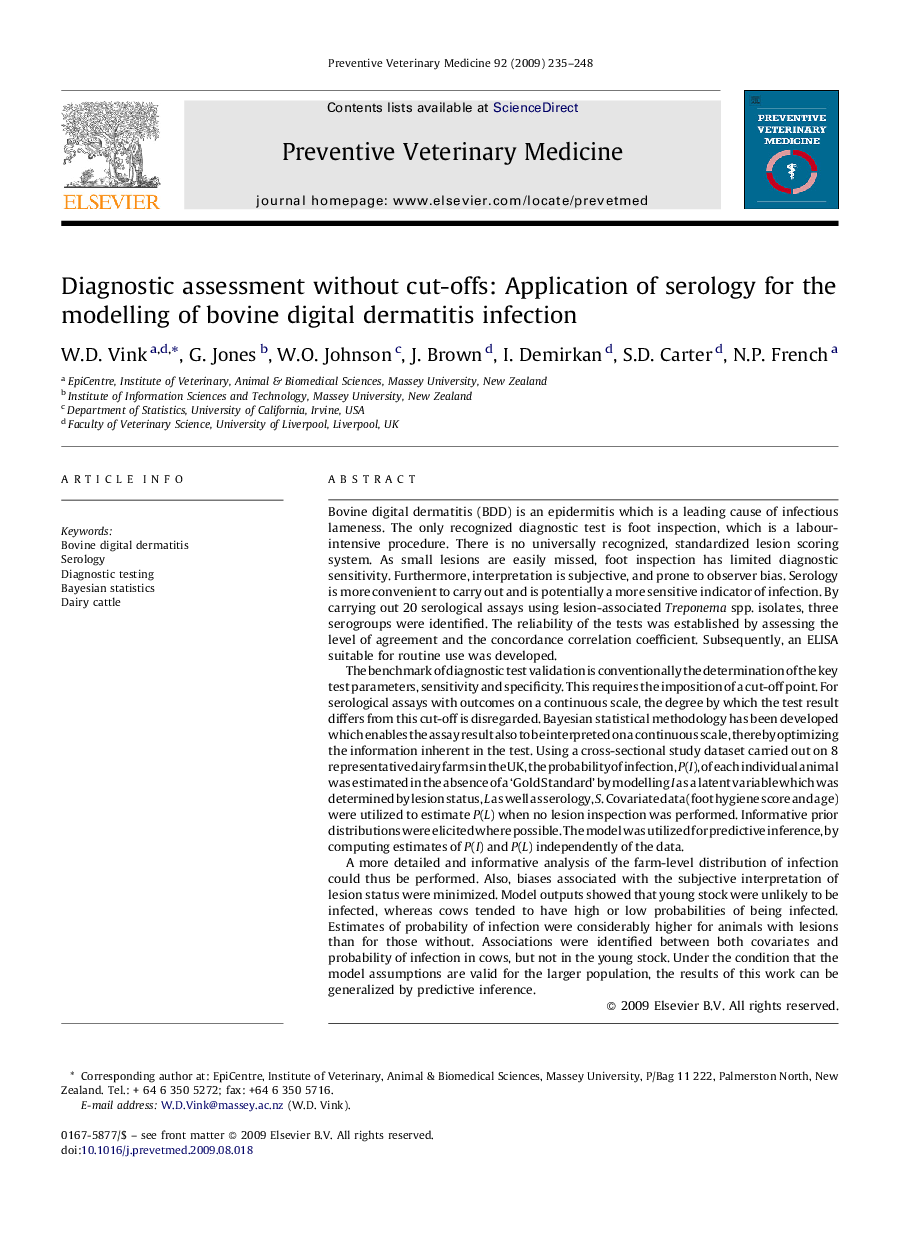| کد مقاله | کد نشریه | سال انتشار | مقاله انگلیسی | نسخه تمام متن |
|---|---|---|---|---|
| 5794260 | 1110080 | 2009 | 14 صفحه PDF | دانلود رایگان |

Bovine digital dermatitis (BDD) is an epidermitis which is a leading cause of infectious lameness. The only recognized diagnostic test is foot inspection, which is a labour-intensive procedure. There is no universally recognized, standardized lesion scoring system. As small lesions are easily missed, foot inspection has limited diagnostic sensitivity. Furthermore, interpretation is subjective, and prone to observer bias. Serology is more convenient to carry out and is potentially a more sensitive indicator of infection. By carrying out 20 serological assays using lesion-associated Treponema spp. isolates, three serogroups were identified. The reliability of the tests was established by assessing the level of agreement and the concordance correlation coefficient. Subsequently, an ELISA suitable for routine use was developed.The benchmark of diagnostic test validation is conventionally the determination of the key test parameters, sensitivity and specificity. This requires the imposition of a cut-off point. For serological assays with outcomes on a continuous scale, the degree by which the test result differs from this cut-off is disregarded. Bayesian statistical methodology has been developed which enables the assay result also to be interpreted on a continuous scale, thereby optimizing the information inherent in the test. Using a cross-sectional study dataset carried out on 8 representative dairy farms in the UK, the probability of infection, P(I), of each individual animal was estimated in the absence of a 'Gold Standard' by modelling I as a latent variable which was determined by lesion status, L as well as serology, S. Covariate data (foot hygiene score and age) were utilized to estimate P(L) when no lesion inspection was performed. Informative prior distributions were elicited where possible. The model was utilized for predictive inference, by computing estimates of P(I) and P(L) independently of the data.A more detailed and informative analysis of the farm-level distribution of infection could thus be performed. Also, biases associated with the subjective interpretation of lesion status were minimized. Model outputs showed that young stock were unlikely to be infected, whereas cows tended to have high or low probabilities of being infected. Estimates of probability of infection were considerably higher for animals with lesions than for those without. Associations were identified between both covariates and probability of infection in cows, but not in the young stock. Under the condition that the model assumptions are valid for the larger population, the results of this work can be generalized by predictive inference.
Journal: Preventive Veterinary Medicine - Volume 92, Issue 3, 15 November 2009, Pages 235-248